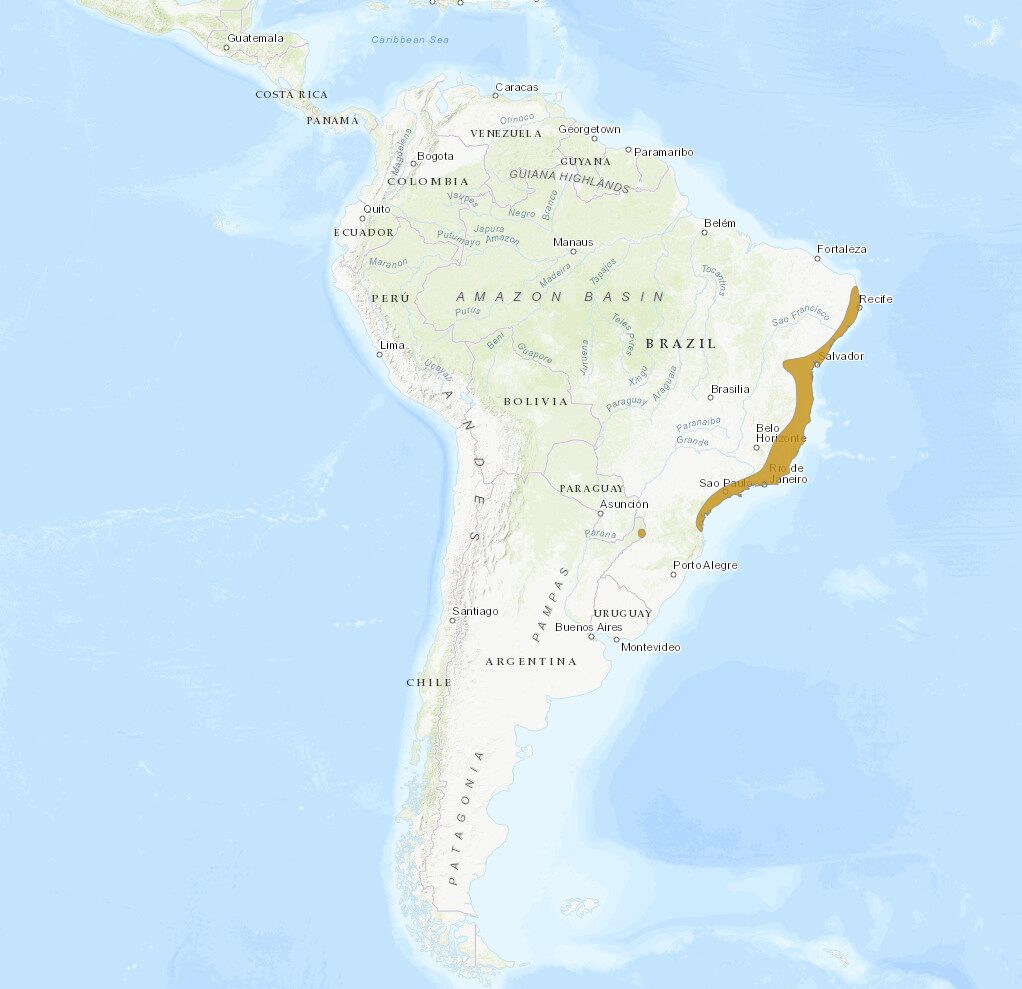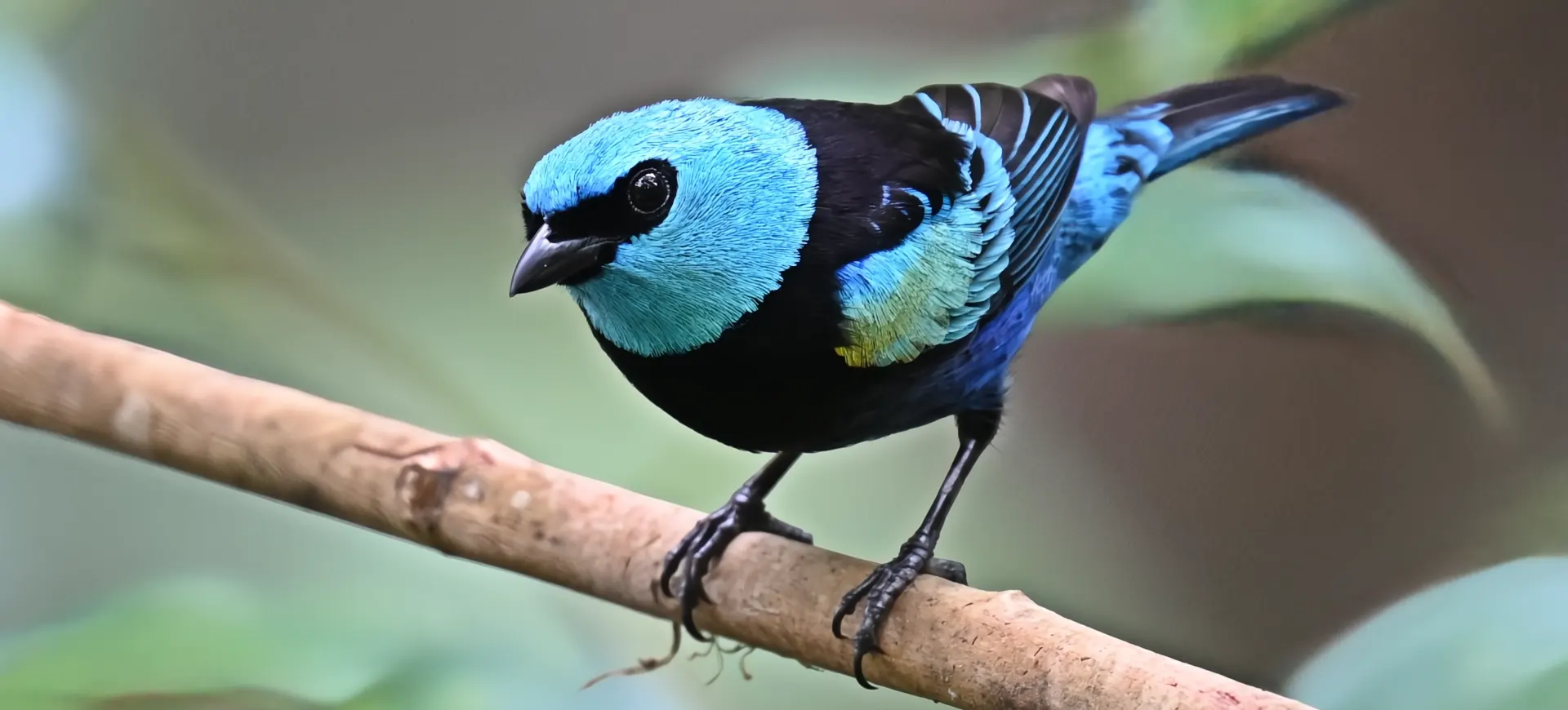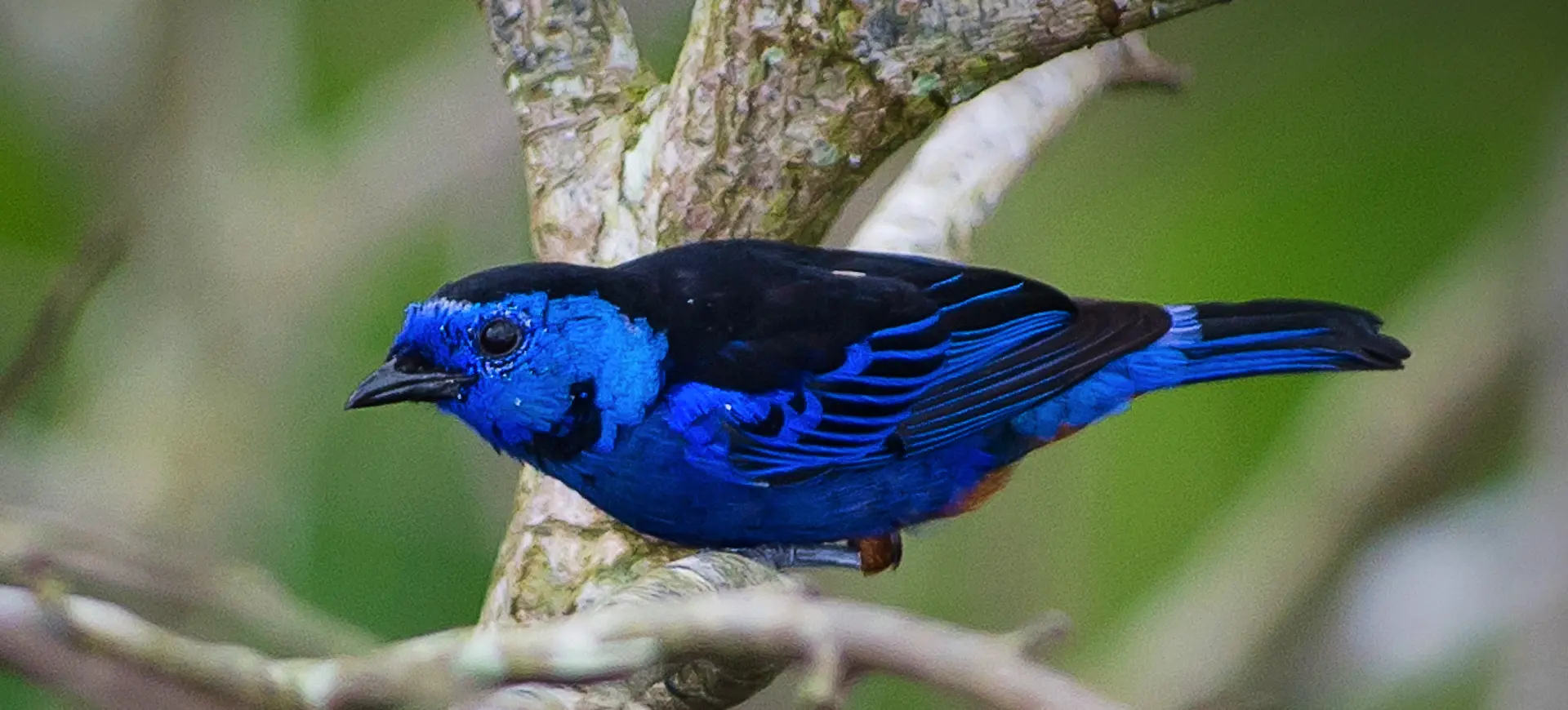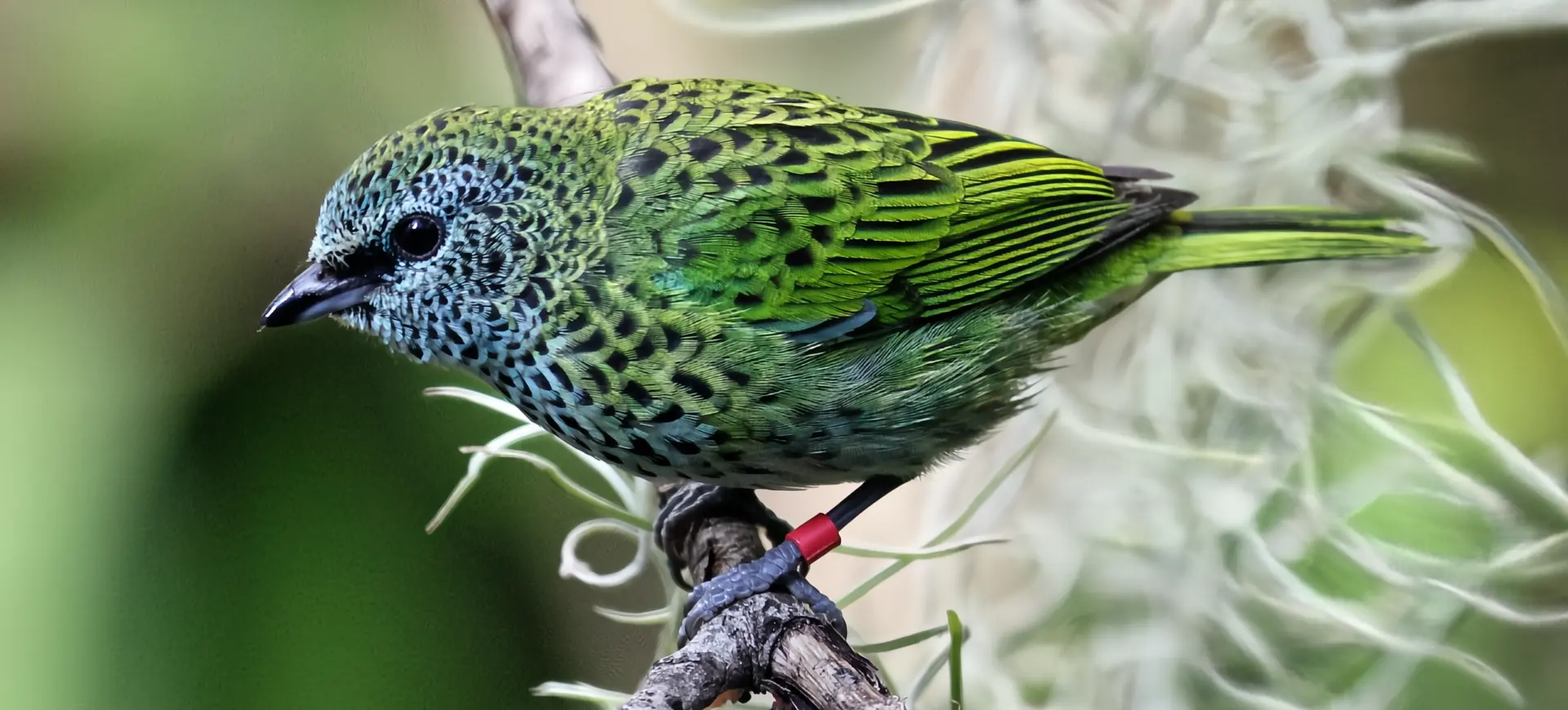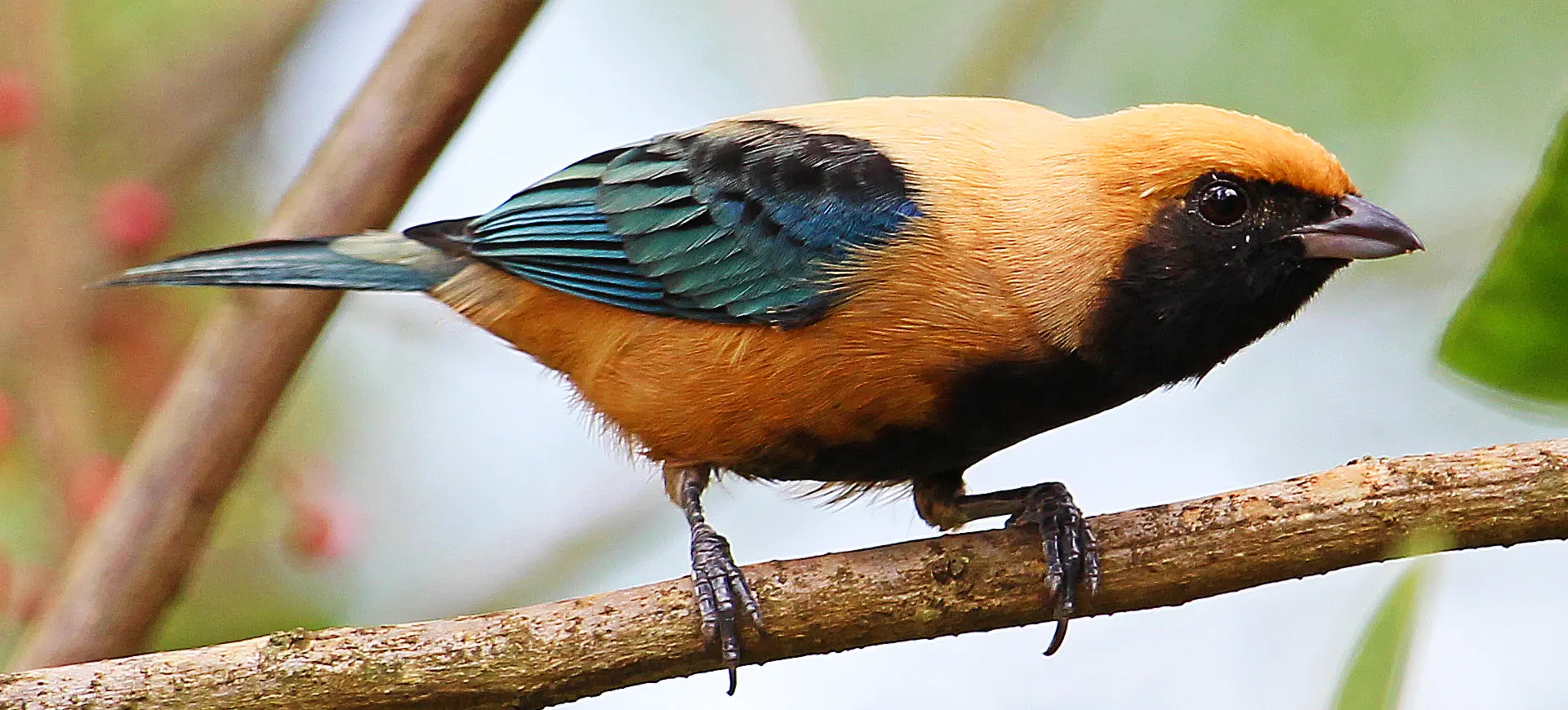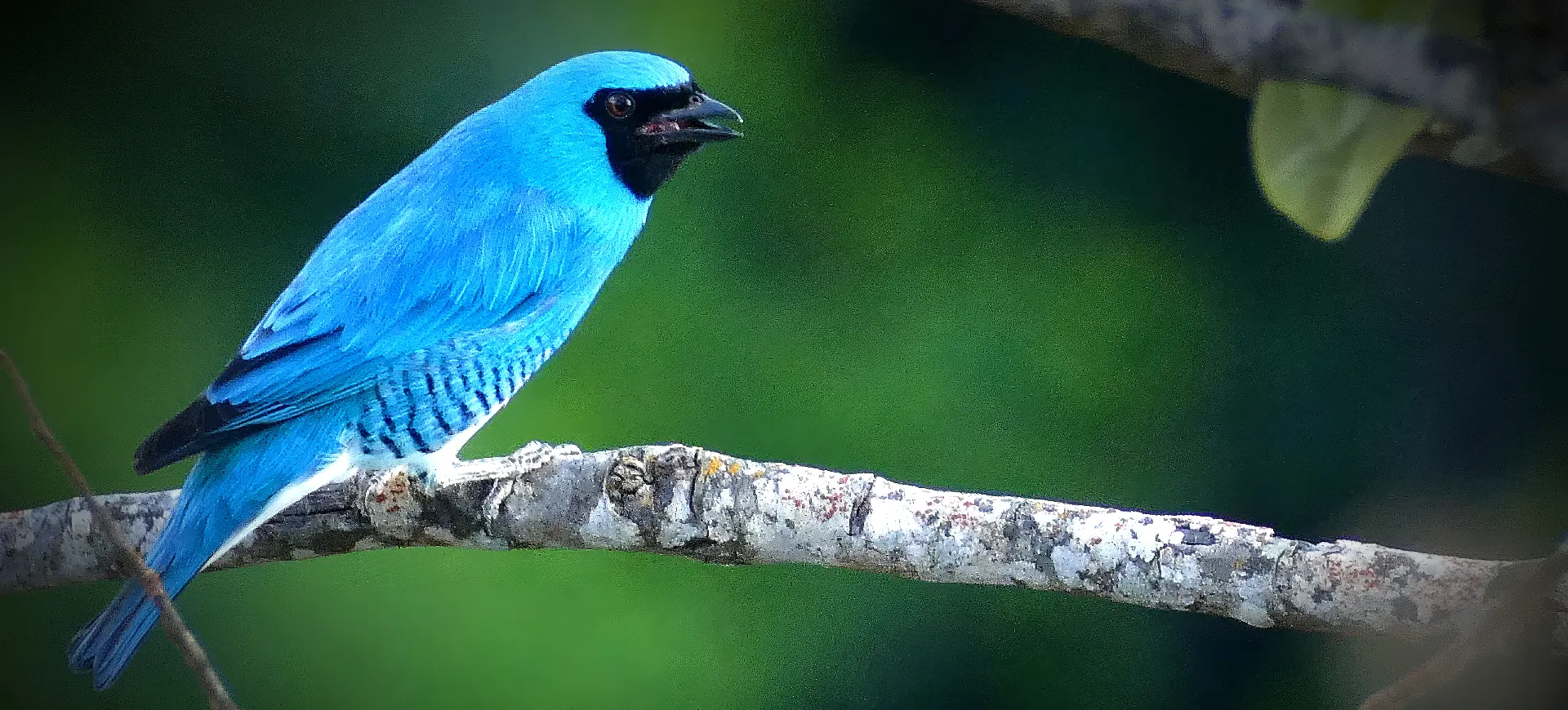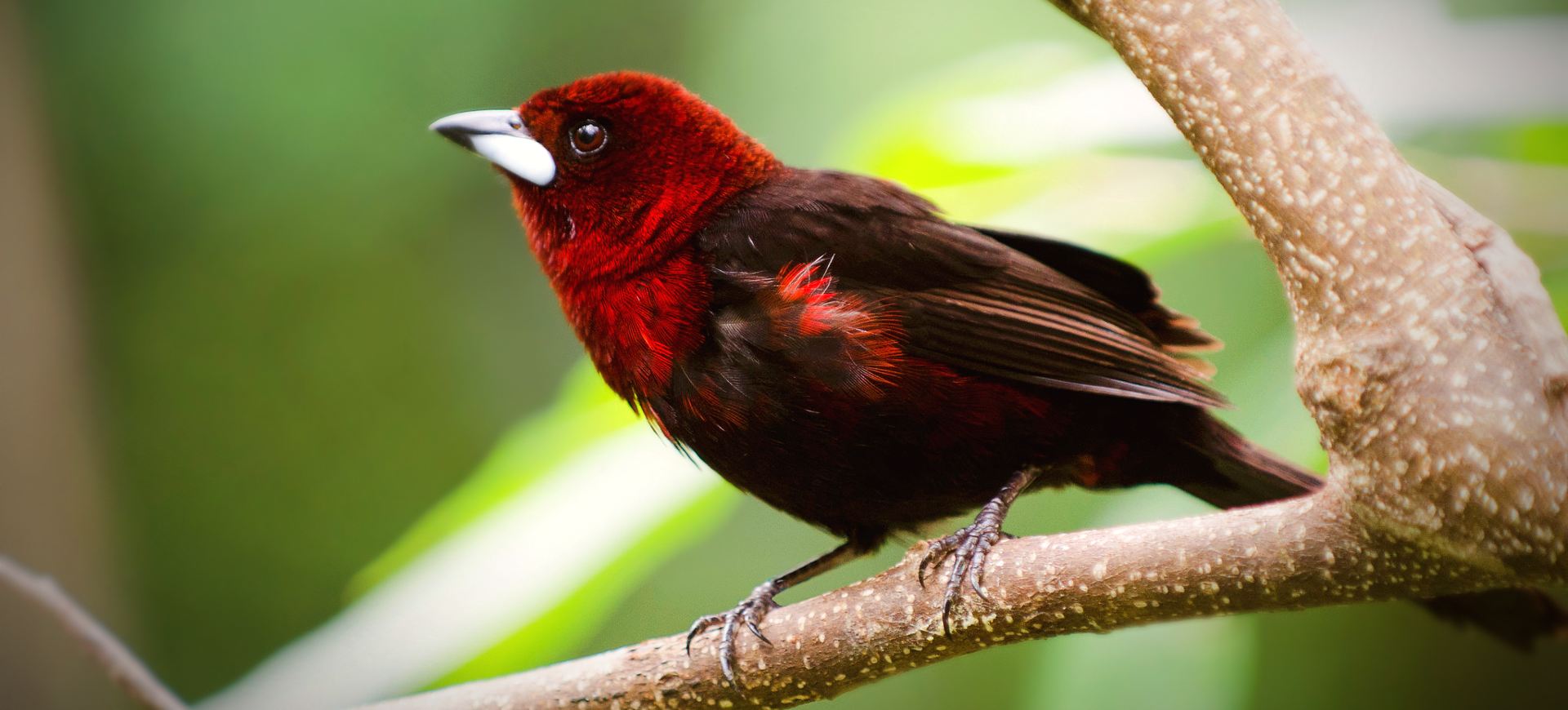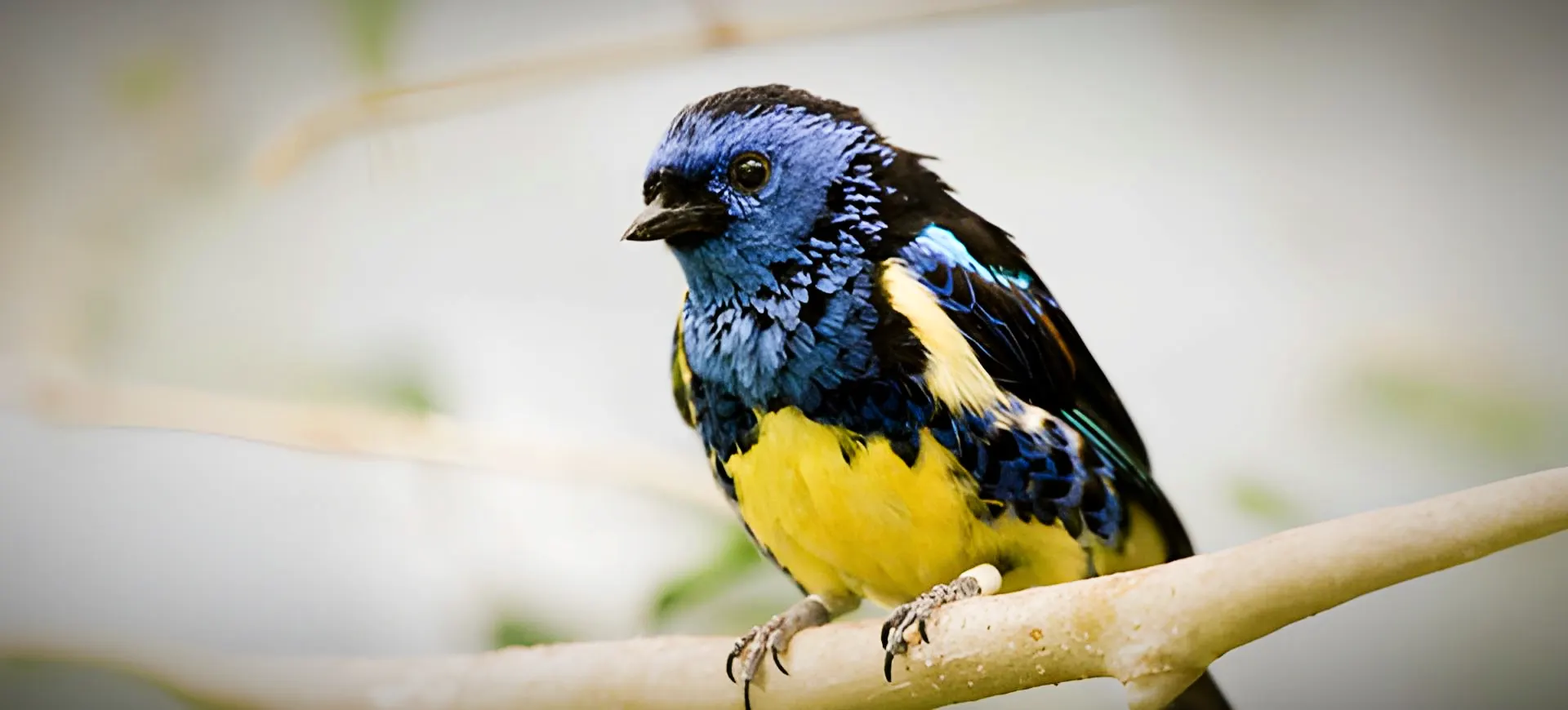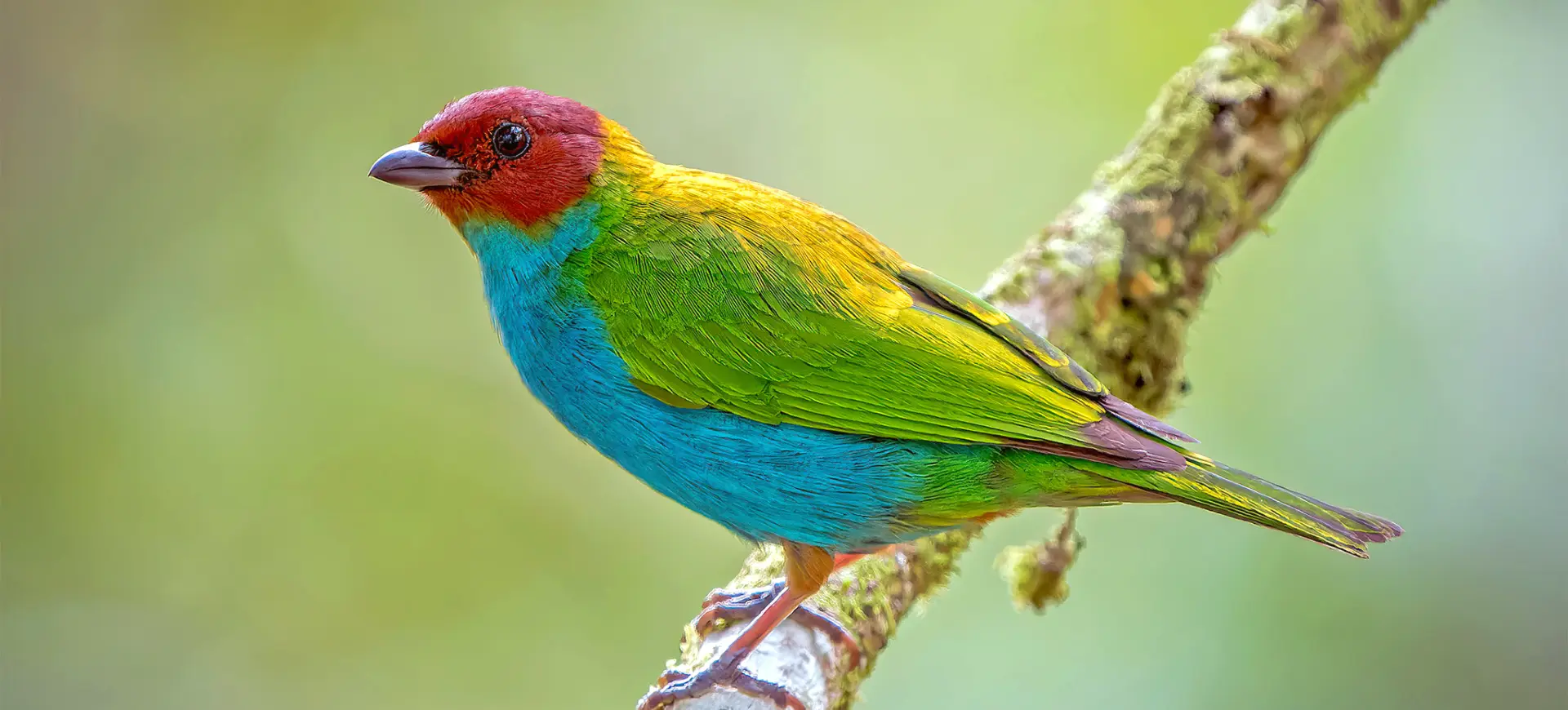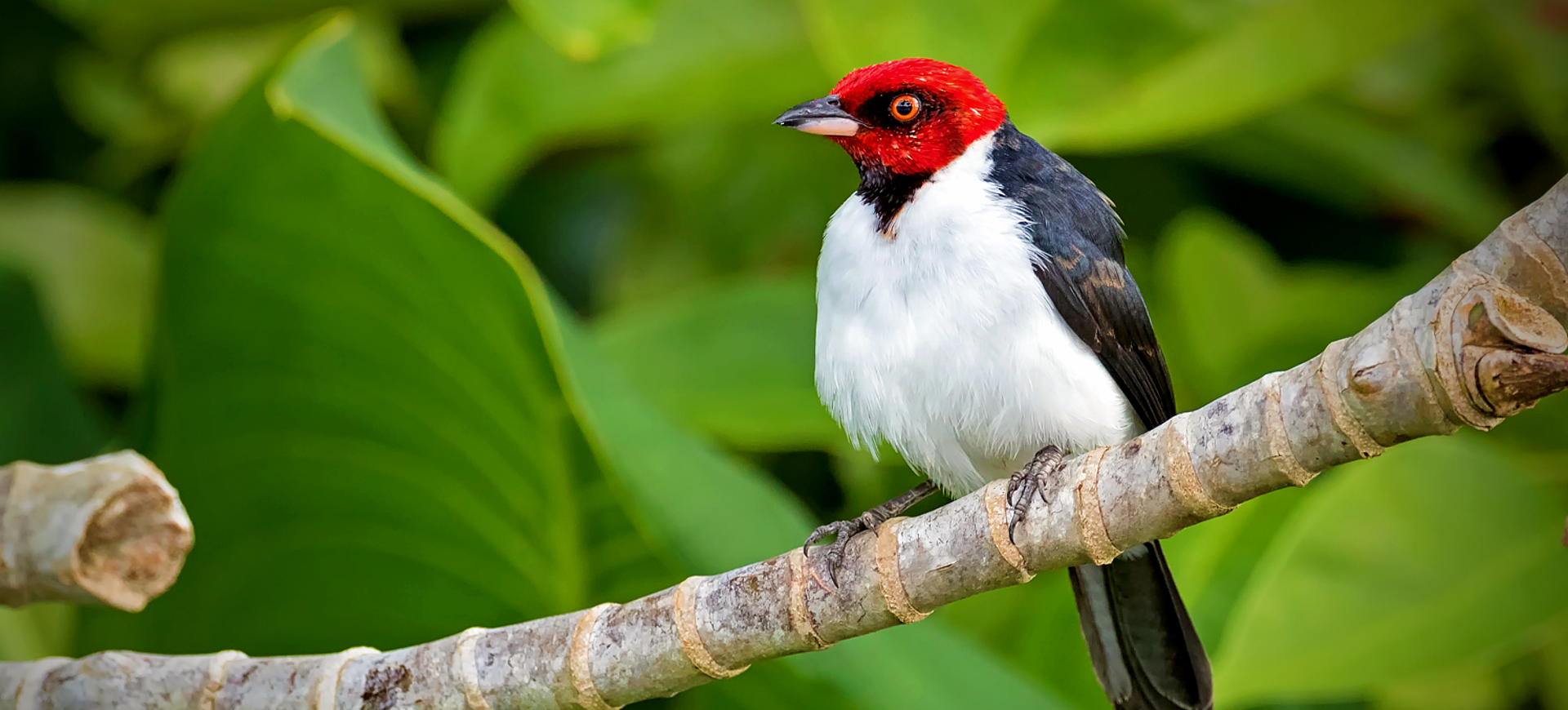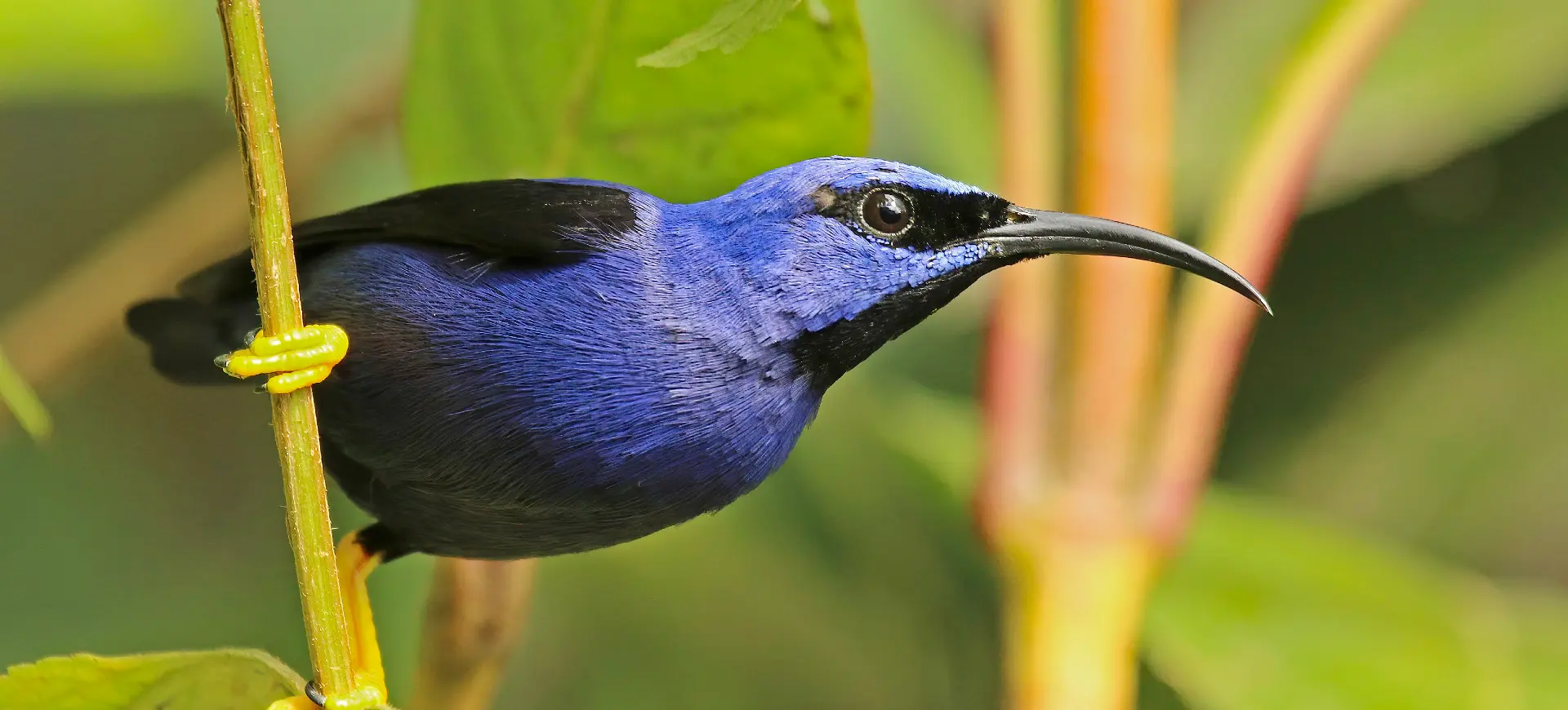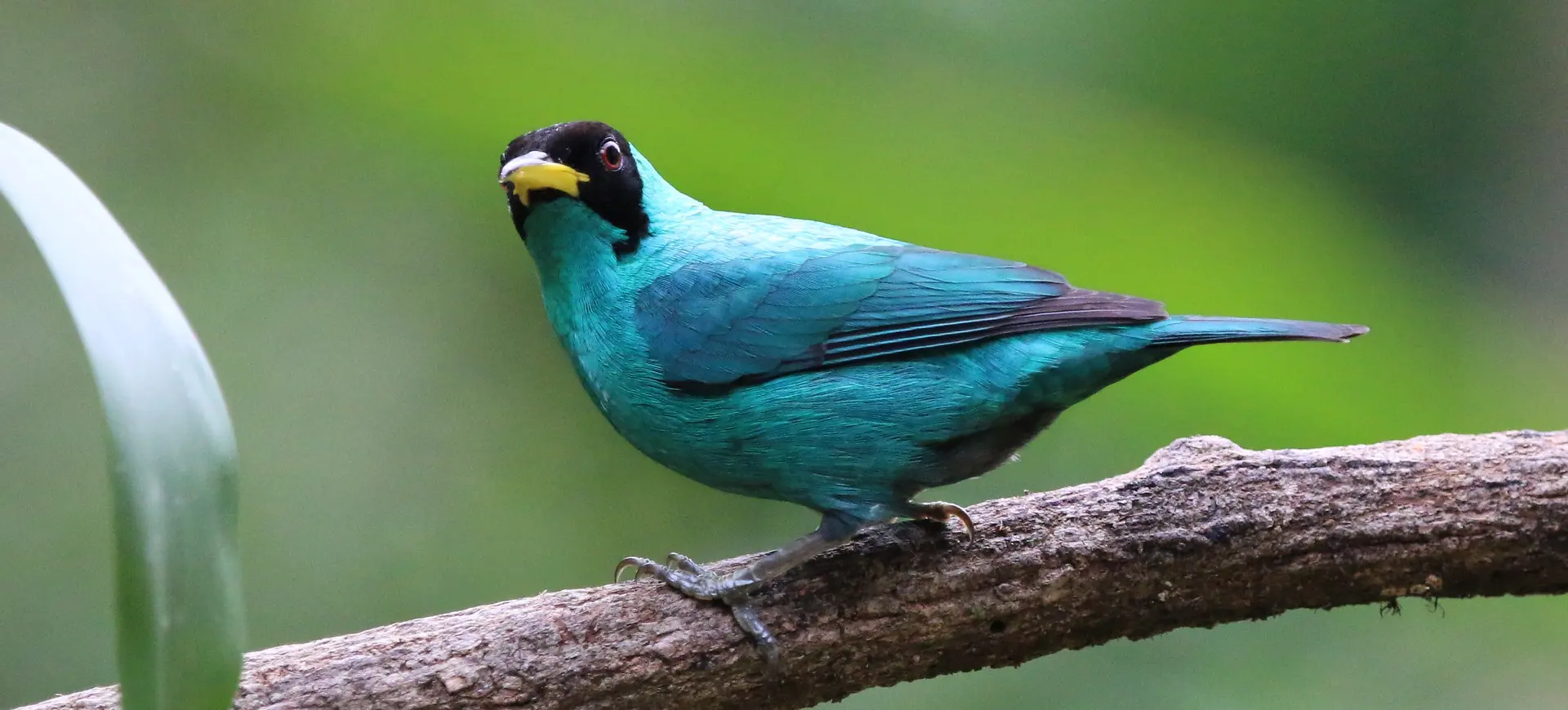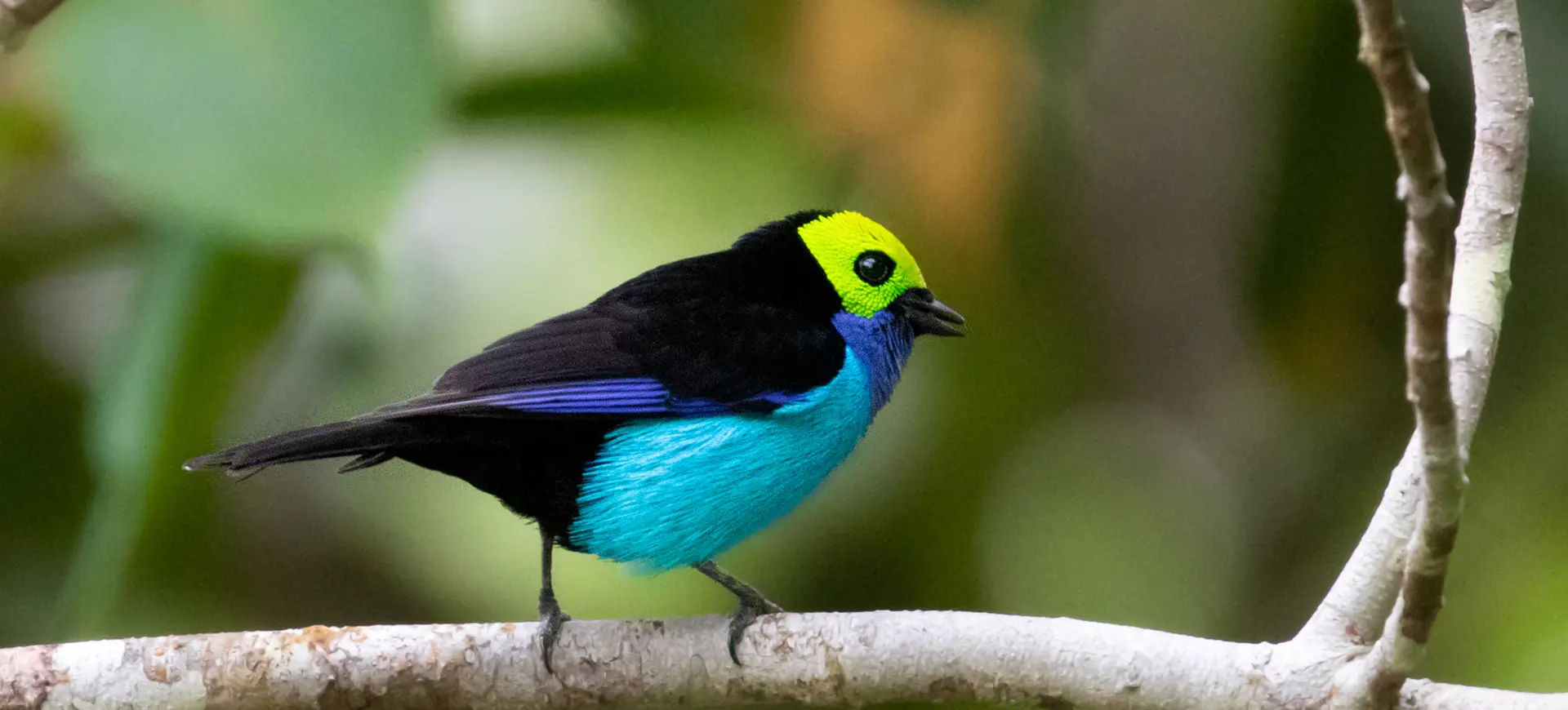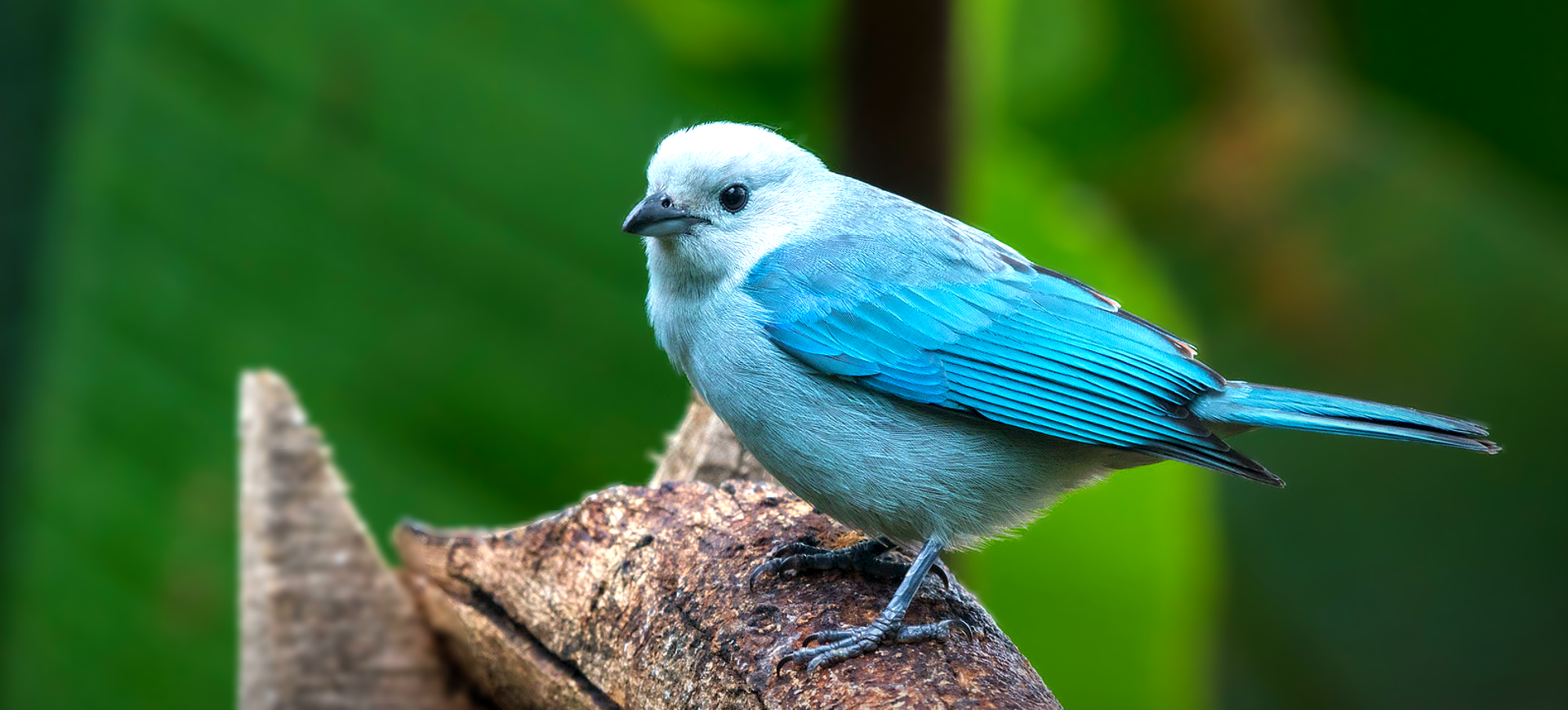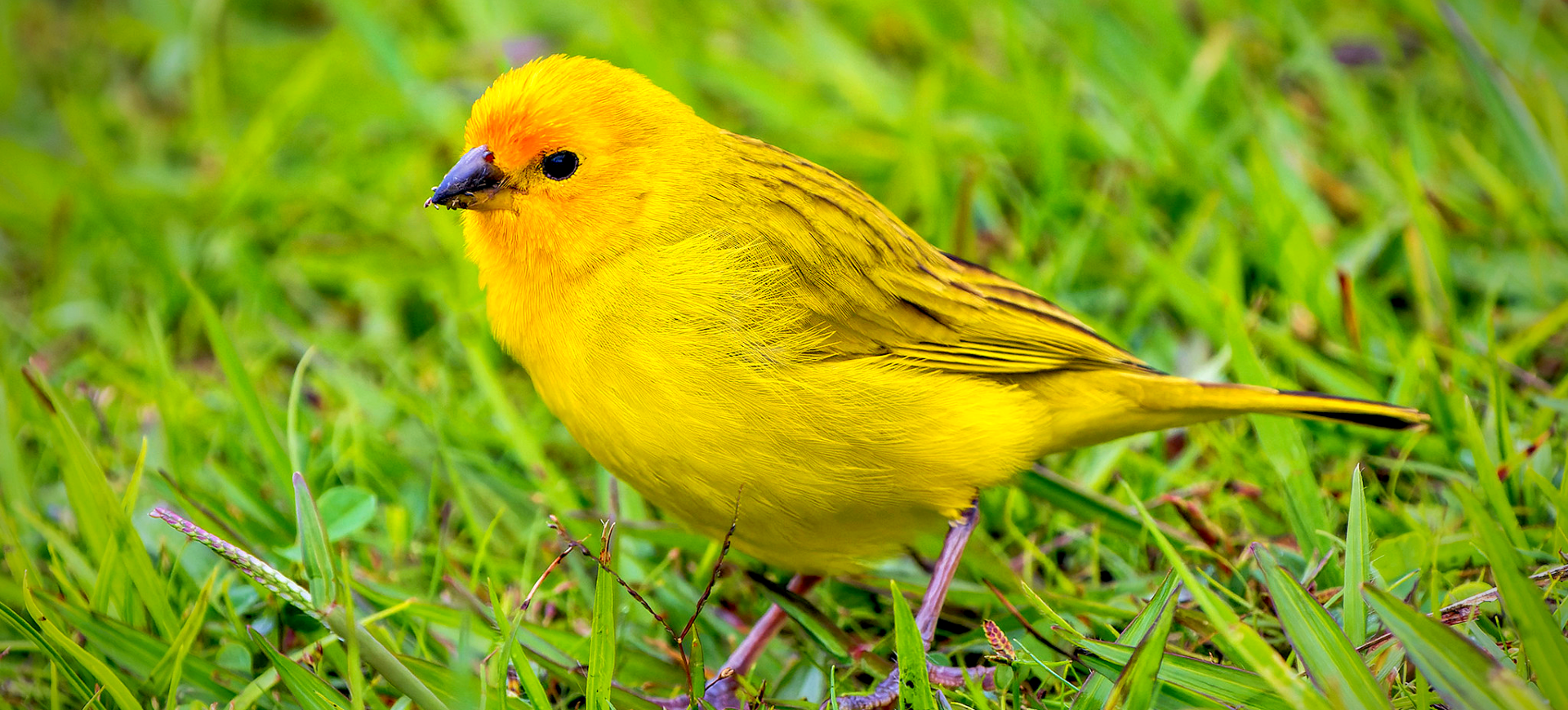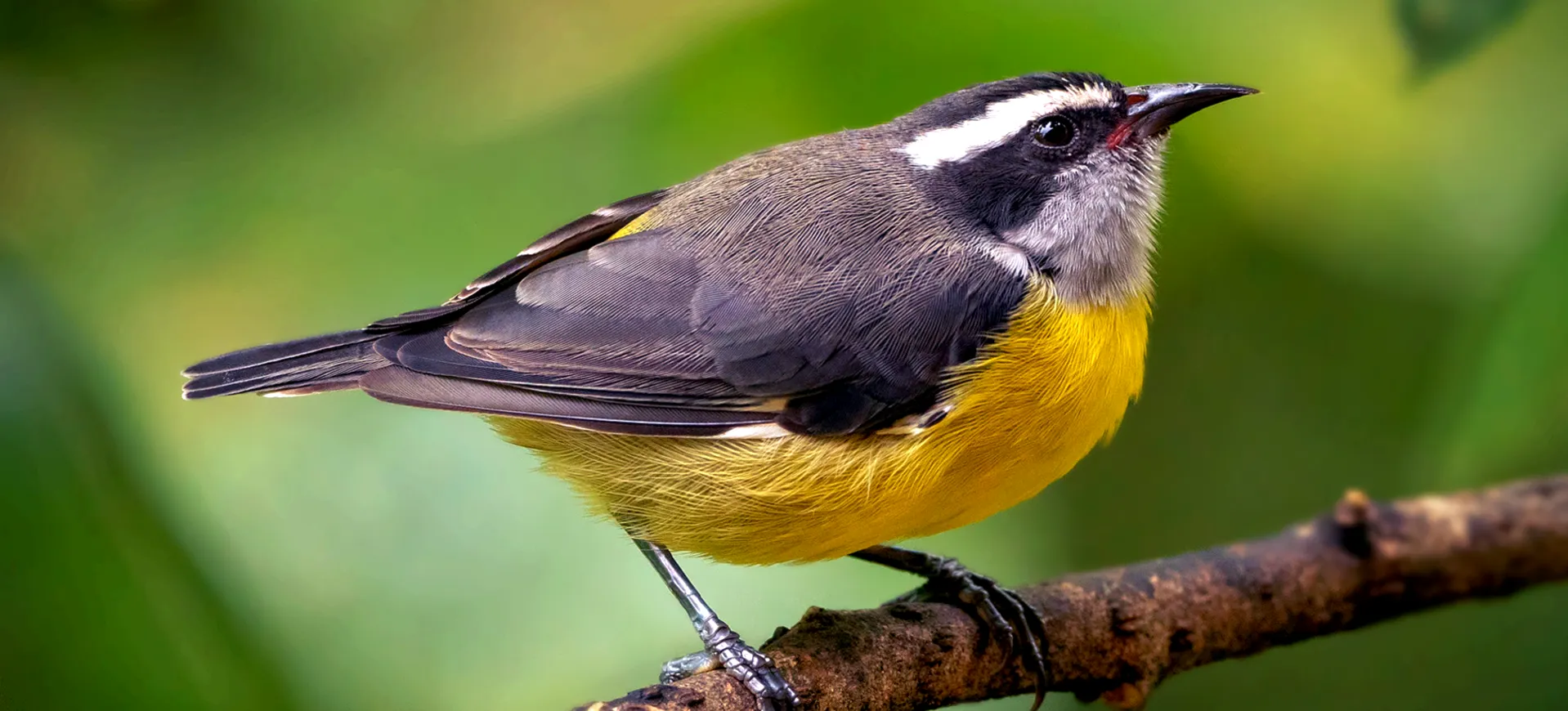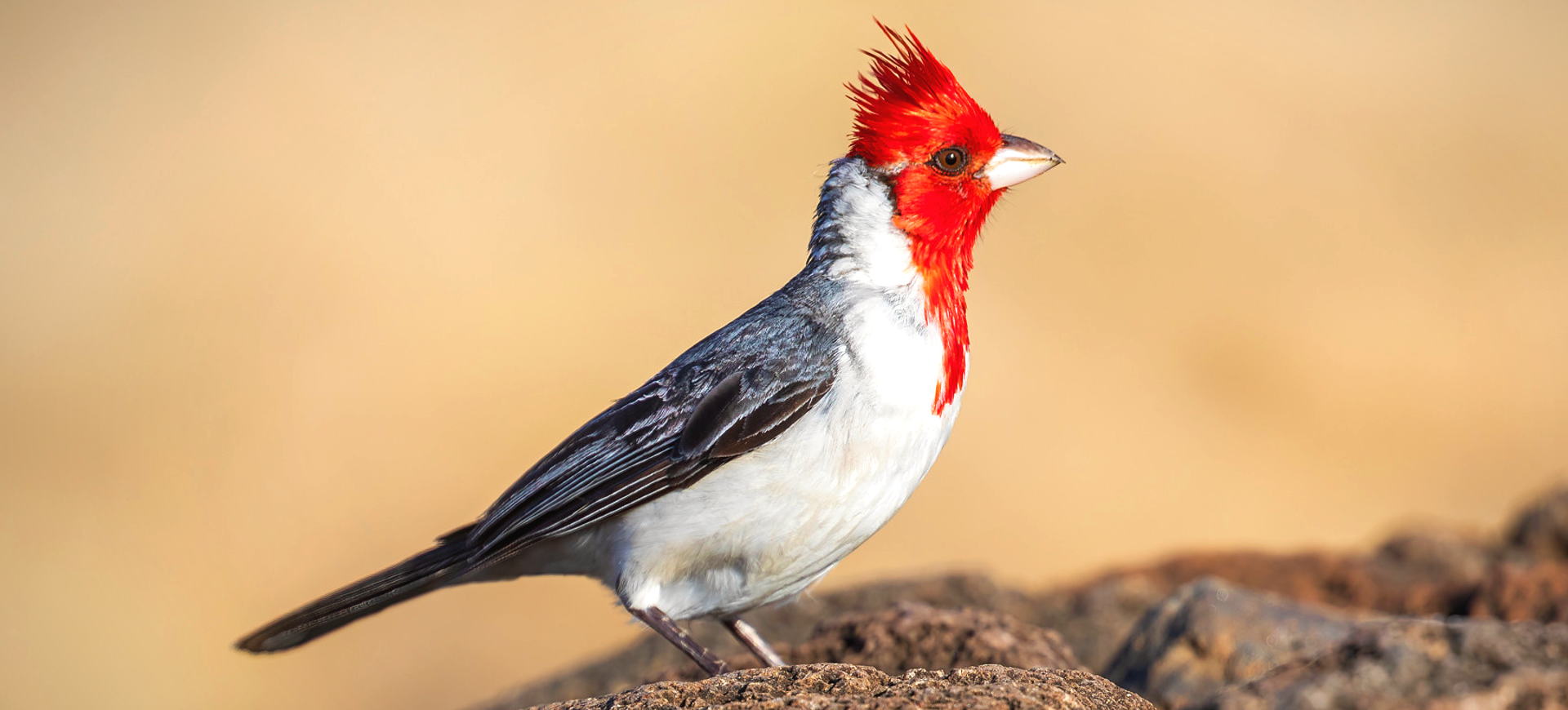Overview
The Brazilian Tanager, Ramphocelus basileus, is a vibrantly colored bird native to the coastal regions of southeastern Brazil. Known for its striking red and black plumage, it is a popular subject for bird enthusiasts and photographers. The males are particularly noticeable due to their bright red bodies contrasted with black wings and tails, while females and juveniles display a duller reddish-brown coloration. This species thrives in lowland tropical forests, secondary growth, cultivated areas and gardens, adapting well to human-altered landscapes.
Brazilian Tanagers primarily feed on fruits, nectar, and insects, making them integral to their ecosystem for pollination and seed dispersal. They are often observed in small groups, especially during feeding, where their social behavior becomes evident. These birds are also known for their loud, melodic calls and songs, which play a role in communication within the group and during courtship by males. Their presence indicates a healthy, fruit-abundant environment, which is crucial for the survival of many bird species.
Despite their adaptability, Brazilian Tanagers face threats of habitat loss and degradation due to urban expansion and agriculture. However, they are still relatively common within their range due to their ability to live in varied habitats. Conservation efforts focus on habitat preservation and promoting bird-friendly practices in agriculture and urban planning. This species’ ability to thrive in diverse environments suggests a potentially stable future if current habitats can be maintained or improved.
Taxonomy
Kingdom
Phylum
Class
Order
Family
Genus
Species
Type
Current distribution:
The Brazilian Tanager is primarily distributed along the eastern coast of Brazil, from Paraíba in the North to Santa Catarina in the South. Its population is densest in areas that have retained large tracts of Atlantic Forest, but it is also commonly found in secondary forests and urban environments. This adaptability to various habitats has helped maintain its population despite ongoing environmental pressures.
Despite its relatively stable population, the Brazilian Tanager remains dependent on conserving its natural habitats. Urban expansion and agricultural development threaten its survival, highlighting the need for integrated conservation strategies, including habitat protection and sustainable land use practices.
Physical Description:
The Brazilian Tanager is a medium-sized bird known for its robust and vibrant appearance. Males typically exhibit a bright crimson-red body with contrasting black wings and tails, which makes them easily distinguishable in their natural habitat. Females and juveniles, on the other hand, are more subdued in color, featuring a reddish-brown hue that provides better camouflage against predators. The species is characterized by a strong, conical beak well adapted for cracking seeds and accessing fruit pulp.
This tanager’s body is compact and designed for agility, necessary for maneuvering through dense foliage in search of food. Its legs are strong, enabling it to perch securely on branches while feeding. The Brazilian Tanager’s overall morphology perfectly adapts to its arboreal lifestyle, which involves frequent flying from tree to tree within its territory. Its vivid coloration serves as a breeding attractant and a deterrent to potential predators, signaling its robust health and quick reflexes.

Lifespan: Wild: ~10 Years || Captivity: ~12 Years

Weight: Male & Female: 40.95-1.41 oz (27-40 g)

Length: Male & Female: 6.5-7.1 in (16.5-18 cm)

Wingspan: Male & Female: 9.8-11.4 in (25-29 cm)

Top Speed: 20 mph (32 km/h)
Characteristic:
Native Habitat:
The Brazilian Tanager is predominantly found in the Atlantic Forest of eastern Brazil, an area known for its high biodiversity and endemism. This habitat includes tropical and subtropical moist broadleaf forests, secondary forests and coastal vegetation. The Tanager’s adaptability to different environments has allowed it to thrive even in disturbed and fragmented landscapes, including urban areas and gardens.
Preserving the Atlantic Forest is critical for the survival of this species, as it provides essential resources such as food and nesting sites. The Brazilian Tanager’s dependence on forested environments makes it vulnerable to deforestation and habitat degradation, which are ongoing concerns in its native range. Conservation efforts are essential to protect these habitats and ensure the continued survival of this colorful and ecologically important bird.
Biomes:
WWF Biomes:
Biogeographical Realms:
Continents:
Diet:
Diet & Feeding Habits:
Brazilian Tanagers are omnivorous, with a diet that includes various fruits, insects, and nectar. They play a crucial role in their ecosystem as pollinators and seed dispersers, contributing to the health and regeneration of their habitats. The birds are adept at foraging in different environments, from the dense undergrowth of forests to shrubs in urban gardens, showing flexibility in their feeding behavior.
Their feeding strategy involves solitary and group foraging, with birds often seen feeding together in fruiting trees. This social feeding behavior helps locate food sources and provides safety in numbers from potential predators. The Brazilian Tanager’s diet is closely linked to the seasonal availability of fruits and insects, which dictates their movement patterns within their range.
Mating Behavior:
Mating Description:
Brazilian Tanagers are monogamous, often forming long-term pair bonds for several breeding seasons. During the breeding season, males display vibrant plumage and vocalizations to attract females and deter rivals. These displays are crucial for securing a mate and establishing breeding territories. Nesting typically occurs in dense vegetation, where the female builds a cup-shaped nest to lay her eggs.
Both parents are involved in the care of the young, with duties including feeding and defending the nest from predators. The cooperative breeding behavior ensures a higher survival rate for the chicks, allowing for the continuation of the species. The reproductive success of Brazilian Tanagers is closely linked to the availability of resources in their environment, which influences their breeding timing and success.
Reproduction Season:
Birth Type:
Pregnancy Duration:
Female Name:
Male Name:
Baby Name:
Social Structure Description:
Brazilian Tanagers are social birds often seen in small groups, particularly during feeding. This social behavior facilitates sharing information about food sources and protects from predators. Outside of the breeding season, these groups may include individuals of various ages and both sexes, contributing to the complex social interactions observed within the species.
During the breeding season, the social structure shifts as pairs form and become more territorial. This period is marked by increased aggression towards other pairs and single individuals as pairs work to defend their nesting sites and resources. Understanding the social dynamics of Brazilian Tanagers is important for conservation efforts, as it influences their habitat requirements and behavior.
Groups:
Conservation Status:
Population Trend:
The Brazilian Tanager’s population is considered stable within its native range, largely due to its adaptability to different habitats. The species is relatively common in areas with suitable habitats, although detailed population studies are lacking. Monitoring and assessing the population is important for understanding its ecological needs and conservation status.
Threats to their population include habitat loss from deforestation and urban development, which reduce available nesting and feeding sites. Conservation measures that protect natural habitats and promote sustainable land use are crucial for maintaining healthy populations of Brazilian Tanagers.
Population Threats:
Habitat loss due to deforestation and urbanization is the primary threat to the Brazilian Tanager. These activities reduce the availability of critical resources such as food and nesting sites, impacting their ability to reproduce and survive. Additionally, the fragmentation of habitats can isolate populations, making it difficult for individuals to find mates and leading to genetic bottlenecks.
Other threats include the illegal pet trade, where birds are captured for their striking appearance. Increased enforcement of wildlife protection laws and community education are needed to combat these threats and protect the Brazilian Tanager.
Conservation Efforts:
Conservation efforts for the Brazilian Tanager focus on habitat preservation and restoration, particularly in the Atlantic Forest region. Protecting existing forests and restoring degraded areas are key strategies for maintaining healthy populations. Environmental education programs that raise awareness about the species and its needs are also important for gaining public support for conservation actions.
Collaborative efforts between government agencies, non-governmental organizations, and local communities are essential for conserving the Brazilian Tanager effectively. These initiatives help ensure that conservation measures are sustainable and beneficial to wildlife and human populations.
Additional Resources:
Fun Facts
- The Brazilian Tanager’s vivid red color is not just for show; it also signals health and vitality to potential mates.
- They are known for their ability to adapt to urban environments, making them a familiar sight in Brazilian cities.
- Brazilian Tanagers have a sweet tooth for nectar, which they obtain by visiting flowers, contributing to their role as pollinators.
- Their song is a mix of musical whistles and calls, which can be heard throughout their habitat.
- Unlike many bird species, Brazilian Tanagers can be seen feeding on the ground, especially when searching for fallen fruits.
- They are part of the Thraupidae family, including some of the world’s most colorful birds.
- Conservation efforts for Brazilian Tanagers help protect other species that share their habitat.
- The species’ abispecies’ life in various habitats has helped it withstand some of the pressures of habitat fragmentation.
- Brazilian Tanagers are often used as indicator species for the ecological health of their environments.
- During mating season, males become particularly vocal, using their calls to attract females and warn off competitors.


